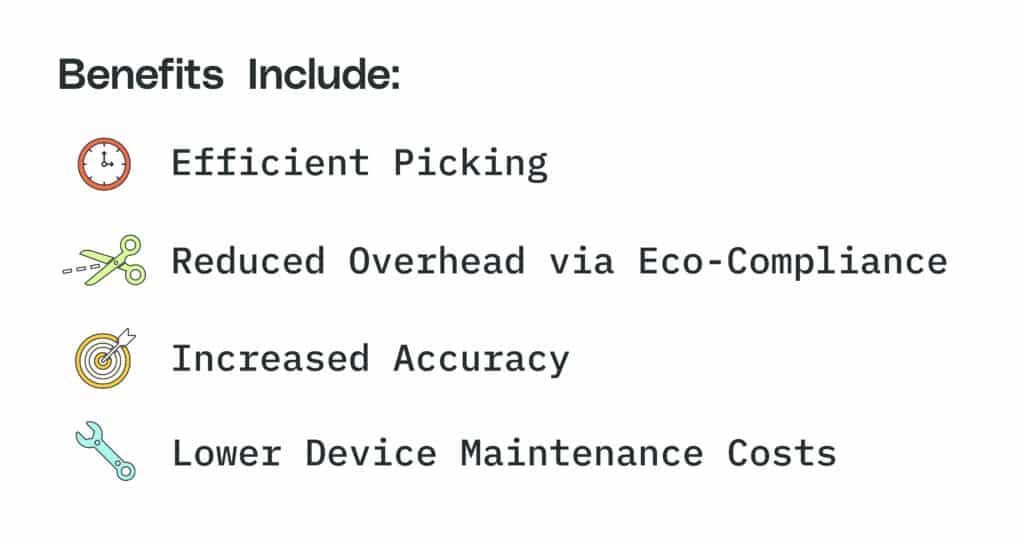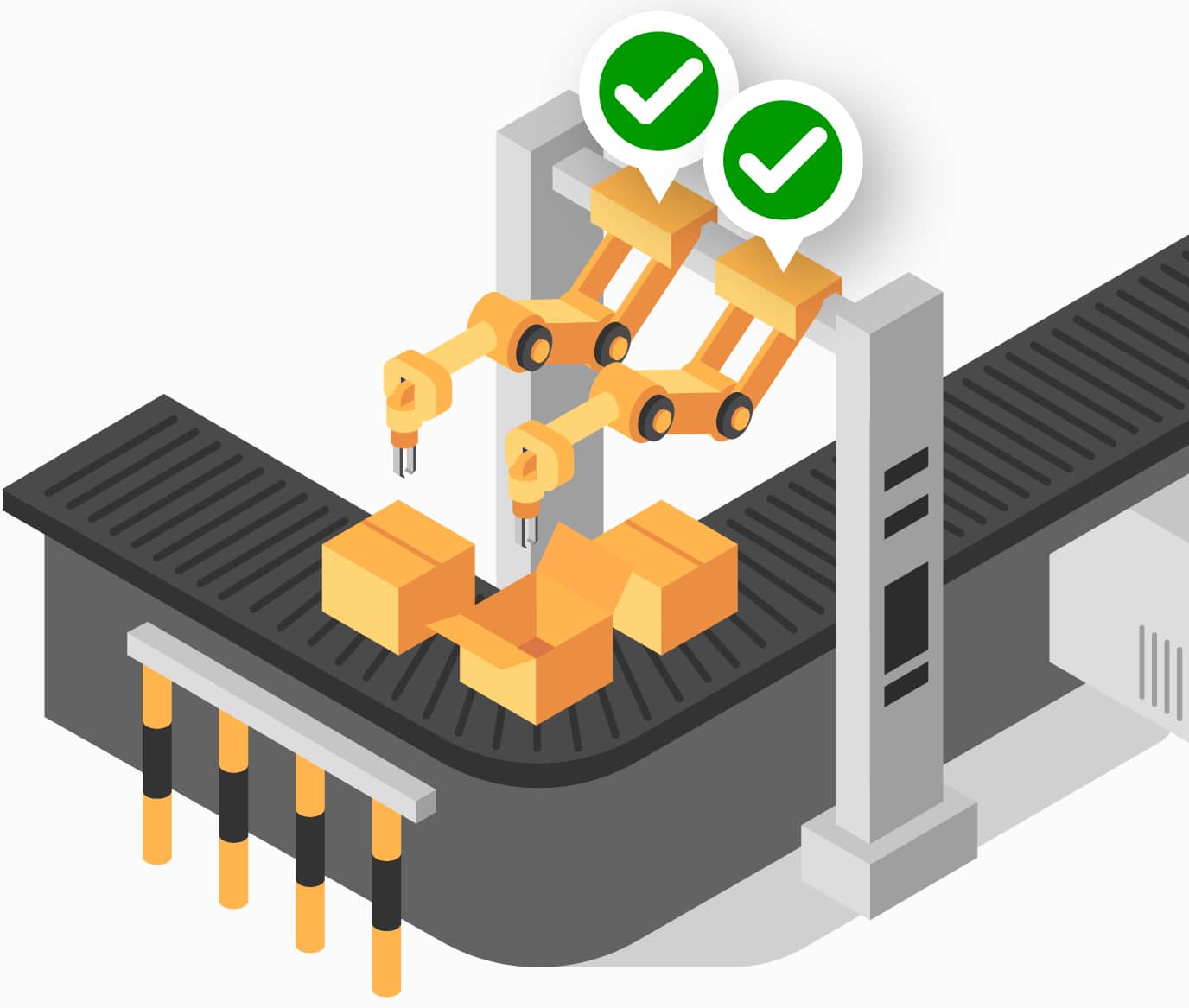WHITEPAPERS
With IoT + 5G You Can Finally Live Your Smart Warehouse Dream
The dawn of Industry 4.0 reimagined how warehouses operate worldwide. Now, 5G is ushering in an even more advanced era of the fourth industrial revolution — one in which smart warehouses are uniquely positioned to thrive. In this guide, we explore how the 5G mobile network combines with IoT to increase automation and reduce costs for smart warehouses.
Author: Caty Cherkesky
SOFTWARE ENGINEER
As a Software Engineer at Very, Caty is driven by her curiosity and the desire to continuously improve both as an individual developer and as a teammate.

Just a few years ago, 5G seemed like a distant and futuristic endeavor. But the future is here, and so is the promise of 5G. By accelerating and improving communication between smart devices, 5G has the potential to address various warehousing needs with greater efficiency than ever before.
5G: Empowering Optimized, Energy-Efficient Smart Warehouses
Although still in its infancy, 5G has already made far-reaching impacts across a variety of applications. And as its rollout continues, more and more industries will enjoy its benefits. For smart warehousing, 5G not only optimizes current IoT processes; it also promises innovations centered around consumers, employees, and the environment that are not possible with any of the previous Gs.
Before diving into improvements and innovations realized by 5G, let’s briefly discuss the technical reasons behind all the buzz surrounding 5G and IoT.
5G is technically better than 4G.
| 4G | 5G | |
| Operating Frequency | 0.7 – 2.5 GHz | 28 GHz |
| Directionality | Floodlight | Spotlight |
| Max Devices | 4k per sq km | 1000k per sq km |
| Min Transmission | 1 kHz | 0 kHz, True Sleep Mode |
The higher operating frequency of 5G networks is better for several reasons, including increased data capacity or bandwidth, immunity to the slowdowns of existing data transmissions, and simultaneous, interference-free use alongside other wireless data.
Because 5G can support 250 times more devices than 4G, it is especially preferable for smart warehouses and other IoT applications. The increased capacity of 5G is due in part to how it implements massive multiple-input multiple-output technology: Instead of blanket coverage of an area–which wastes signals wherever there are no connected devices–5G targets and tracks individual users to increase energy efficiency and speed while reducing latency.
5G also promises advanced sleep modes in which quiet devices are switched off or allowed to hibernate while there is no traffic. Although 4G networks strive to implement some form of sleep mode, their base stations are designed to emit a 1 kHz reference signal regardless of connected device activity. Meanwhile, 5G permits true sleep mode with transmissions pausing altogether during no device activity, making 5G all the more energy efficient.
All of these improvements enabled by 5G can significantly enhance existing IoT workflows. Additionally, 5G creates new capabilities that are only beginning to be explored, especially for smart warehouses. So far, large logistics companies have been leading the way to realizing numerous smart warehousing benefits.

IoT + 5G Brilliantly Solve Common Warehousing Challenges
Although warehousing requirements vary across industries, companies, and even climates, 5G combined with IoT provides flexible and efficient solutions that are broadly applicable. The benefits of such smart warehouses include increased picking efficiency and accuracy, lower maintenance costs, and reduced overhead via eco-compliance.
Challenge: Revenue Loss Due to Inventory and Picking Inaccuracies
One of the biggest challenges for warehouse managers is maintaining accurate inventory. This becomes exceedingly difficult when variables like global pandemics and supply chain issues are thrown into the mix.
When economies came screeching to a halt at the onset of the coronavirus pandemic, consumers turned to online retailers in lieu of in-person shopping. This stressed inventory strategies as warehouses suddenly ran out of essentials like toilet paper and hand soap, resulting in lost sales and negative customer experiences.
Inventory inaccuracies impact operations within the warehouse as well. Inaccuracies cause delays in the picking process, which in turn slows down operations. It’s impossible to know how much time employees spend searching for inventory that isn’t where it’s supposed to be. As a result, picking efficiency is ripe for optimization; labor “usually accounts for 70% of operations cost within a warehouse and 50–60% of manpower cost is spent on order picking.” In fact, many warehouses already use robots or other devices to help pick more efficiently.
Inventory inaccuracy can be addressed in part by “smart” approaches to inventory management that include sensors that measure shelf weight and inventory tracking to monitor the location and movement of inventory within the warehouse. However, there are limitations to what such sensors can do.
Solution: Leveraging Augmented Reality (AR) To Optimize the Picking Process
We’re not talking about filters that will make employees look like butterflies or astronauts. For logistics companies, AR has far-reaching potential beyond being a novelty. AR-guided navigation is quickly becoming commonplace for companies wanting to use web applications to guide pickers to the most efficient route to retrieve inventory. Today, companies like DHL Supply Chain are considering upping their AR investment to include AR glasses for hands-free implementation known as “Vision Picking”:
AR-glasses can provide a picker with key pieces of information: what am I looking for (specific items are tagged with barcodes, which can be read by the glasses), where is it located (the most efficient path between stacks in the warehouse can be calculated and displayed), and where does it need to go (a picking trip may include items for multiple orders that need to be kept separate).”
DHL
Recent trials for Vision Picking have gone smoothly according to DHL’s article, and they are now looking to make it standard for their operations.
Solution: Reaching New Heights with Robotics + Automatic Guided Vehicles
Lower latency provided by 5G means that navigation and auto-guided picking robots are much more effective than before as warehouses shift to vertical storage for logistic and energy efficiency. Not only does this increase safety for employees who won’t have to pick inventory from the highest locations, but also boosts performance of self-guided vehicles when navigating difficult-to-reach spaces.
Challenge: Reducing Overhead by Reducing Carbon Footprint
Another issue facing modern warehouses is reducing their carbon footprints while watching their overhead. Like virtually every industry, retail and logistics companies face a global demand for more efficient energy use.
Zebra Technologies published a report analyzing the state of warehousing in 2020, describing a vision for what the next five years in warehousing may look like. The report asserts that “Over the next few years, warehouses will become increasingly eco-friendly. As ‘conscious capitalism’ has moved from the margins to the mainstream in business practices, the warehouse industry is no exception… While most respondents said they view green initiatives as an expense, they also see it as a savings opportunity.”
Companies have much to gain economically — both in money saved and in consumer loyalty — by embracing the green movement. According to the report, the move toward more environmentally conscious operations will include:
- Adding timers or sensors for environmental controls such as lighting, heating, and cooling.
- Reducing energy consumption.
- Implementing vertical warehousing strategies to use their space more efficiently.
Current technologies offer solutions such as smart home technologies and energy-efficient devices. But while these advances have sparked innovation, 5G promises to bring IoT tech from the consumer to the supplier, moving smart logistics forward by leaps and bounds.
Solution: Automatically Monitoring and Adjusting Warehouse Environments with IoT Sensors
According to Zebra’s report, 44% of participants said they intend to add timers or sensors to better control lighting, heating, and cooling. While there’s still a need to optimize energy efficiency across 5G networks, warehouses can harness the advantages of 5G connectivity to optimize their energy consumption using fewer devices with more accuracy than previously possible. Coupled with the power of 5G connectivity, here’s how improved IoT will change the game for smart warehouses:
- Fewer devices can cover a much larger physical area: 5G connectivity enables fewer sensors to span a much larger area than previous technologies. This means less equipment to maintain and potentially more efficient use of power.
Keep in mind that, depending on warehouse conditions, device connectivity could be impacted by factors like obstructed lines of sight and even humidity in the air, which could degrade the connection. Consider your environment conditions, floorplan, and picking strategies when implementing new equipment. - Network boosts empower smoother connections between devices: In 2017, the Global System for Communications Association (GSMA) introduced the concept of network slicing, which involves running multiple logical networks as virtually independent business operations on a common physical infrastructure more efficiently and economically. Essentially, a warehouse can parse its networks to divvy up power and provide each of its systems with the latency requirements necessary. 5G means that not only will latency needs be met more easily, but also that smart warehouses will be able to connect more devices to a single network, allowing them to seamlessly scale.
Final Thoughts
Today, the smart logistics industry exists in one of the most demanding consumer ecosystems yet. Between mounting customer expectations and increasingly challenging delivery destinations, warehousing is a delicate balancing act. However, there are encouraging opportunities for logistics and warehousing on the horizon. This is a fantastic moment for warehouse managers to think creatively about their needs and how those needs are evolving. 5G is potentially more than a utility; it can serve as an ecosystem in which various connected devices and systems operate. The dawn of 5G, coupled with recent advancements in IoT technologies and networking capabilities, promise more economic and energy-efficient days ahead.










